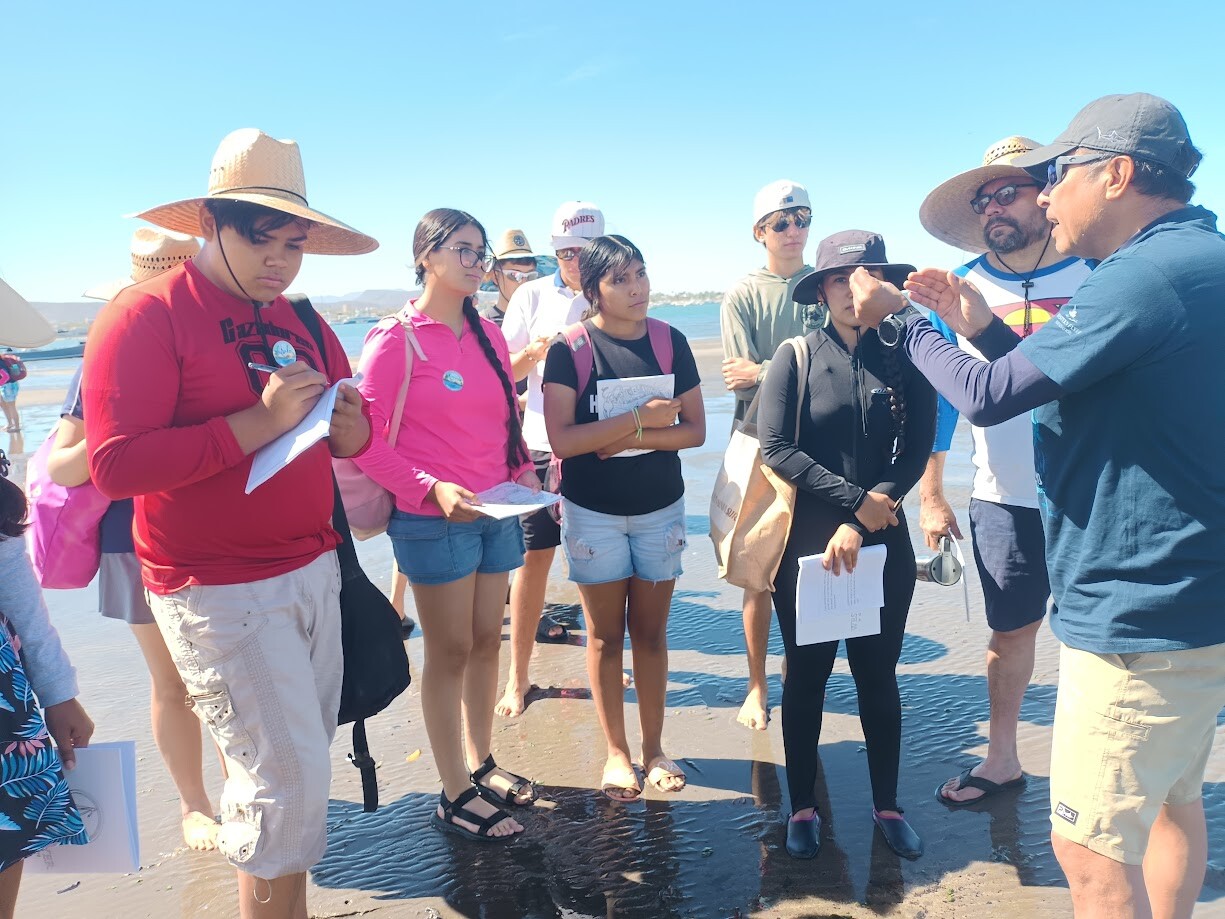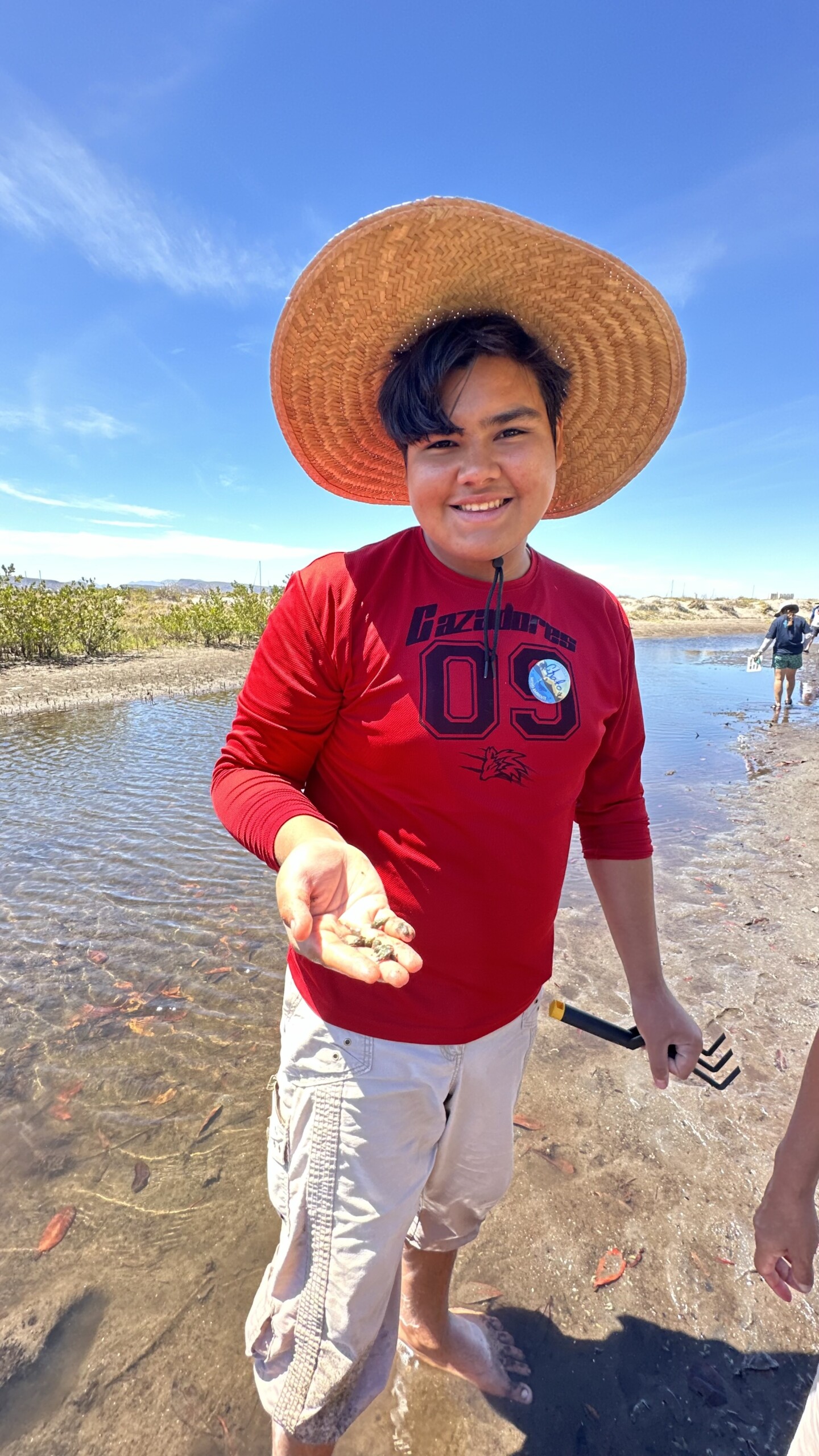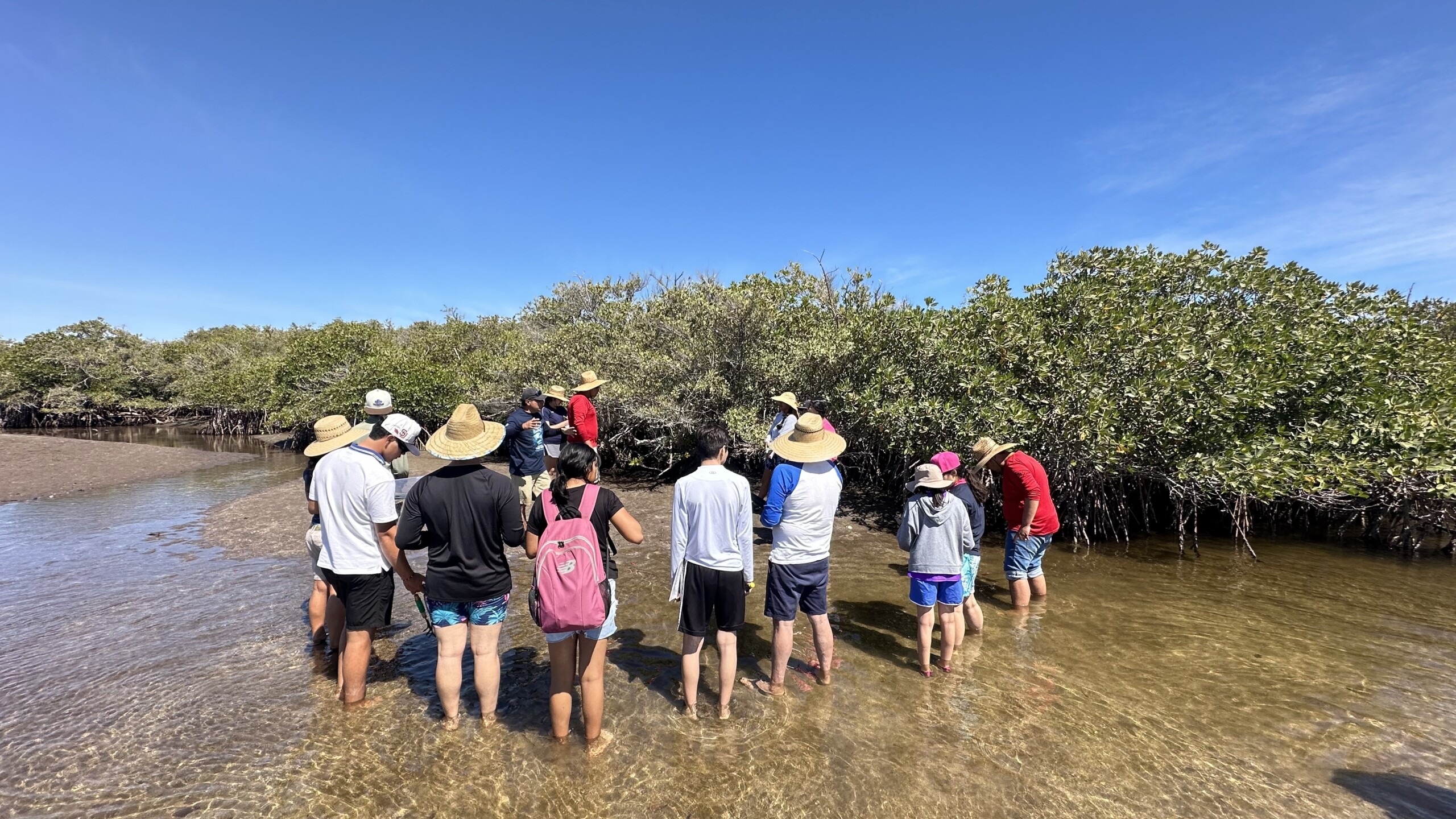
In 1940, author John Steinbeck and marine biologist Ed Ricketts set out on a six-week journey aboard the Western Flyer, exploring the intertidal life of the Gulf of California. Among the places they visited was a quiet peninsula on the edge of La Paz: El Mogote.
Eighty-five years later, the Western Flyer returned.

On May 19, 2025, a group of twenty high school students from La Paz crossed the bay by panga and spent the day exploring El Mogote—not as tourists, but as young scientists. Supported by the Western Flyer Foundation, Baja Coastal Institute (BCI), ¡Andale, La Paz!, Ecology Project International (EPI), and the Alumbra Foundation, the students conducted hands-on fieldwork in the mangroves and tidal flats, identifying species, sketching observations, and learning to see the shoreline through a scientific lens. What they found was telling.
Where Ricketts and Steinbeck once described tidepools “ferocious with life,” today’s El Mogote shows signs of ecological stress. Some of the species documented in 1940—anemones, brittle stars, sea cucumbers—were sparse or absent. The mangrove roots remain biologically rich, but the open flats now host mostly hardy invertebrates like crabs, gastropods, and worms. It’s a pattern that echoes findings from other parts of the Gulf: a slow but noticeable shift in community structure, likely tied to coastal development and other pressures.
Still, the day’s work was about more than just data. It was about curiosity and connection.
“Many of these students had never been to El Mogote, even though it’s just across the bay,” said Aracely Rojas, Western Flyer Foundation’s Baja Program Coordinator, who organized the event. “Watching them kneel in the sand, asking questions, noticing the small creatures—there was a real sense of discovery. This kind of hands-on experience helps them see their home in a new way. It builds not just knowledge, but care.”
Looking ahead, we hope this visit will serve as a foundation for something more sustained. With continued partnership and support, we’re exploring the potential to build a long-term, community-based monitoring effort at El Mogote—engaging students, training local educators, and revisiting the site regularly to track changes over time.
It’s an opportunity not just to revisit history, but to carry it forward—through science, stewardship, and shared curiosity.

